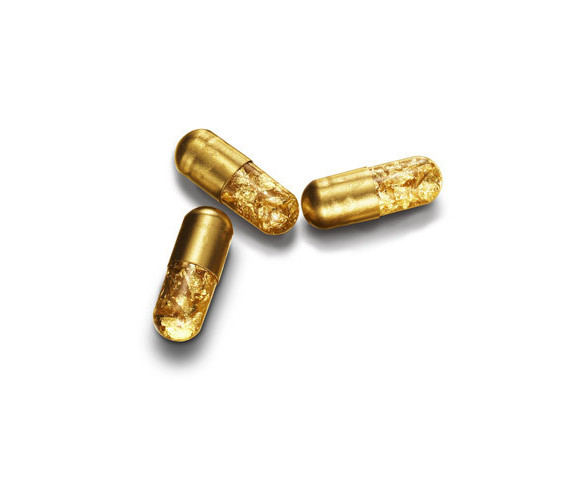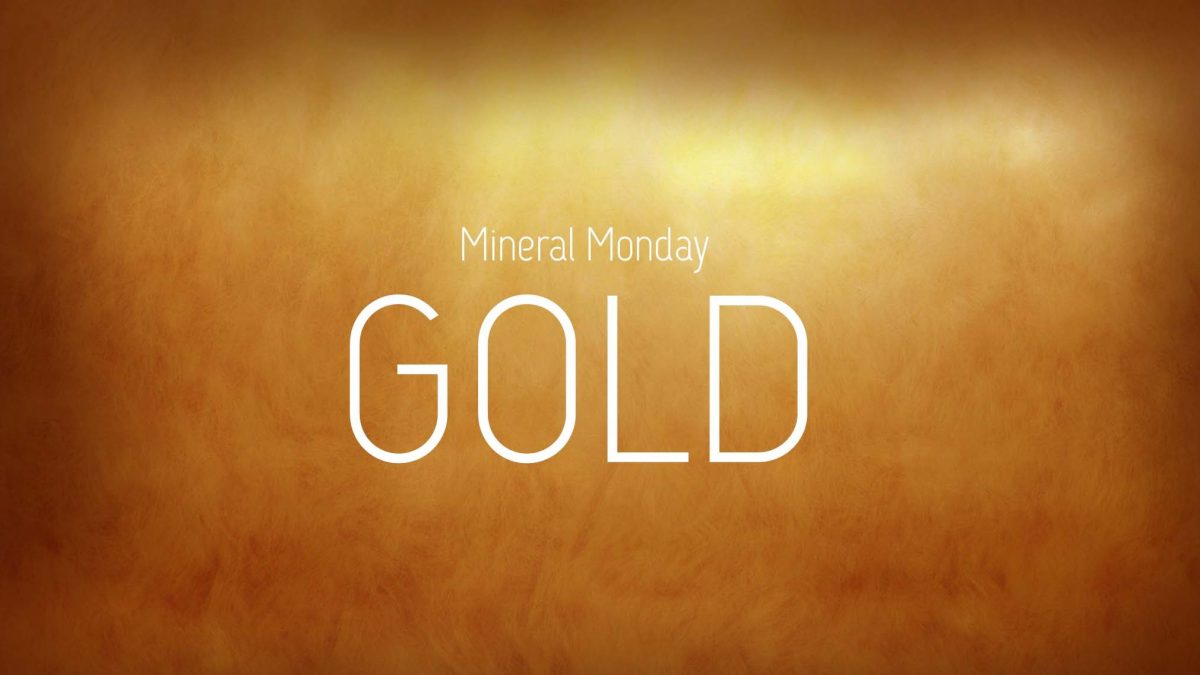Gold is one of the most common precious metal ever. But what exactly do you know about it? Well thank goodness you are subscribed to RocKeSci because now you will get to know even more about gold. Other than it’s yellow. And kinda expensive.
Gold is a chemical element with the symbol Au and atomic number 79. It is a dense, soft, malleable, and ductile metal with a bright yellow color and luster that is considered attractive, which is maintained without tarnishing in air or water. It occurs in hydrothermal vents and placer deposits.
(A hydrothermal vein is a vein which is filled with minerals that contain large amounts of water. This water is chemically bound water, meaning that it is part of the chemical formula for that mineral.)
Uses: Most of the gold that is newly consumed or recycled each year is used in the production of jewelry. About 10% is used in coinage or in the financial stores of governments. The remaining 12% is consumed in a wide range of other uses which include electronics, medicine, dentistry, computers, awards, pigments, guilding, and optics
Test: All gold compounds yield a gold bead when heated on charcoal with sodium carbonate.
Fact Sheet
RocKe Fun Facts
- Most of the gold that is present today in the Earth’s crust and mantle was delivered to Earth by asteroid impacts during the late heavy bombardment.
- Gold is the only metal that is yellow (golden). Other metals may develop a yellowish color, but only after they have oxidized or reacted with other chemicals.

- The element symbol for gold is Au. The symbol comes from the old Latin name for gold, aurum, which means “shining dawn” or “glow of sunrise”. The word “gold” comes from the Germanic languages, originating from the Proto-Germanic gulþ and Proto-Indo-European ghel, meaning “yellow/green”. The pure element has been known since ancient times.
- Gold is extremely ductile. A single ounce of gold (about 28 grams) can be stretched into a gold thread 5 miles (8 kilometers) long. Gold threads can even be used as embroidery thread.

- Although gold is a heavy, dense metal, it is generally considered non-toxic. Gold metal flakes may be eaten in foods or drinks.
- 24 karat gold is pure elemental gold. 18 karat gold is 75% pure gold. 14 karat gold is 58.5% pure gold, and 10 karat gold is 41.7% pure gold. The remaining portion of the metal usually is silver, but may consist of other metals or a combination of metals, such as platinum, copper, palladium, zinc, nickel, iron, and cadmium.
- Gold is the most malleable element. A single ounce of gold can be beaten out into a sheet that is 300 square feet. A sheet of gold can be made thin enough to be transparent. Very thin sheets of gold may appear greenish blue because gold strongly reflects red and yellow.

- The visors of astronauts’ space helmets receive a coating of gold so thin (0.00005 millimeters, or 0.000002 inches) that it is partially transparent. The astronauts can see through it, but even this thin layer reduces glare and heat from sunlight.
- A medical study in France during the early twentieth century suggests that gold is an effective treatment for rheumatoid arthritis
- Gold is edible. Some Asian countries put gold in fruit, jelly snacks, coffee, and tea. Since at least the 1500s, Europeans have been putting gold leaf in bottles of liquor, such as Danziger Goldwasser and Goldschlager. Some Native American tribes believed consuming gold could allow humans to levitate.

- Special properties of gold make it perfect for manufacturing jewelry. These include: very high luster; desirable yellow color; tarnish resistance; ability to be drawn into wires, hammered into sheets or cast into shapes. These are all properties of an attractive metal that is easily worked into beautiful objects. Another extremely important factor that demands the use of gold as a jewelry metal is tradition. Important objects are expected to be made from gold.
- Alloying gold with other metals changes the color of the finished products (see illustration at right). An alloy of 75% gold, 16% silverand 9% copper yields yellow gold. White gold is an alloy of 75% gold, 4% silver, 4% copper and 17% palladium. Other alloys yield pink, green, peach and even black colored metals.
- Oceans are the greatest single reservoir of gold at Earth’s surface, containing approximately eight times the total quantity of gold mined to date. However, the current cost of extracting it is more than the gold is worth.
- Nearly 40 percent of all gold ever mined was recovered from South African rocks.
- Most gold–78 percent of the yearly gold supply–is made into jewelry. Other industries, mostly electronics, medical, and dental, require about 12 percent. The remaining 10 percent of the yearly gold supply is used in financial transactions.
- The oldest worked-gold objects, the products of the ancient Thracian civilization, were made as early as 4000 BC, and were discovered at a burial site in Varna, Bulgaria.
- The Federal Reserve Bank of New York holds the world’s largest accumulation of monetary gold. The vault is 25 meters (80 feet) beneath the street and holds $147 billion worth of gold bullion. The bedrock of Manhattan is strong enough to support the weight of the vault, its door, and the gold inside.
- The Olympic gold medals awarded in 1912 were made entirely from gold. Currently, the gold medals just must be covered in six grams of gold.
In Short
| Symbol | Au |
| Melting point | 1,948°F (1,064°C) |
| Electron configuration | [Xe] 4f14 5d10 6s1 |
| Atomic number | 79 |
| Boiling point: | 5,173°F (2,856°C) |
| Atomic mass: | 196.96657 ± 0.000004 u |
| Color | gold yellow |
| Streak | gold yellow |
| Luster | metallic |
| Diaphaneity | opaque |
| Cleavage | none |
| Mohs Hardness | 2.5 – 3 |
| Specific Gravity | 19.3 |
| Distinguishing Characteristics | color, hardness, streak, specific gravity |
| Crystal System | isometric |
Occurrence
- Hydrothermal vents
- Placer deposits
- sulphides
In Kenya, gold is found in the Migori Archean Greenstone Belt of Western Kenya
Gold Minerals
- native gold [Au]
- gold almalgam [ Au with Hg, Ag]
- sylvanite [ (Au,Ag)Te2 ]
- calaverite [ (Au, Ag)Te2
- petzite [ (Au,Ag)Te2 ]
- nagyagite [sulphotelluride of lead and gold]
World Production
| Rank | Country/Region | Gold production (Metric Tons) |
| World | 2700 | |
| 1 | China | 370 |
| 2 | Australia | 250 |
| 3 | United States | 230 |
| 4 | Russia | 205 |
| 5 | South Africa | 170 |
| 6 | Peru | 165 |
| 7 | Canada | 102 |
| 8 | Indonesia | 95 |
| 9 | Uzbekistan | 90 |
| 10 | Ghana | 89 |
| 11 | Mexico | 87 |
| 12 | Papua New Guinea | 60 |
| 13 | Brazil | 56 |
| 14 | Chile | 45 |
| Rest of the world | 686 |
Uses
Gold is used in
- Jewelry
- Finance
- Glass making
- Aerospace
- Electronics
- Computers
- Dentistry
- Gold gliding
- Medicine
Wallpaper Download
Summary
So there you have it. Now that you have some new knowledge about gold, feel free to share this with your friends colleagues and boy friends. Hope you enjoyed it and if you want to know more about gold hit us up on email.
Subscribe to be first to receive new Mineral Monday articles. Like us of Facebook, tweet us on Twitter, add us on Google and watch our for our new Youtube channel.
Sources
- AMNH
- Geology.com
- Random history
- Rutley’s Elements of Mineralogy






